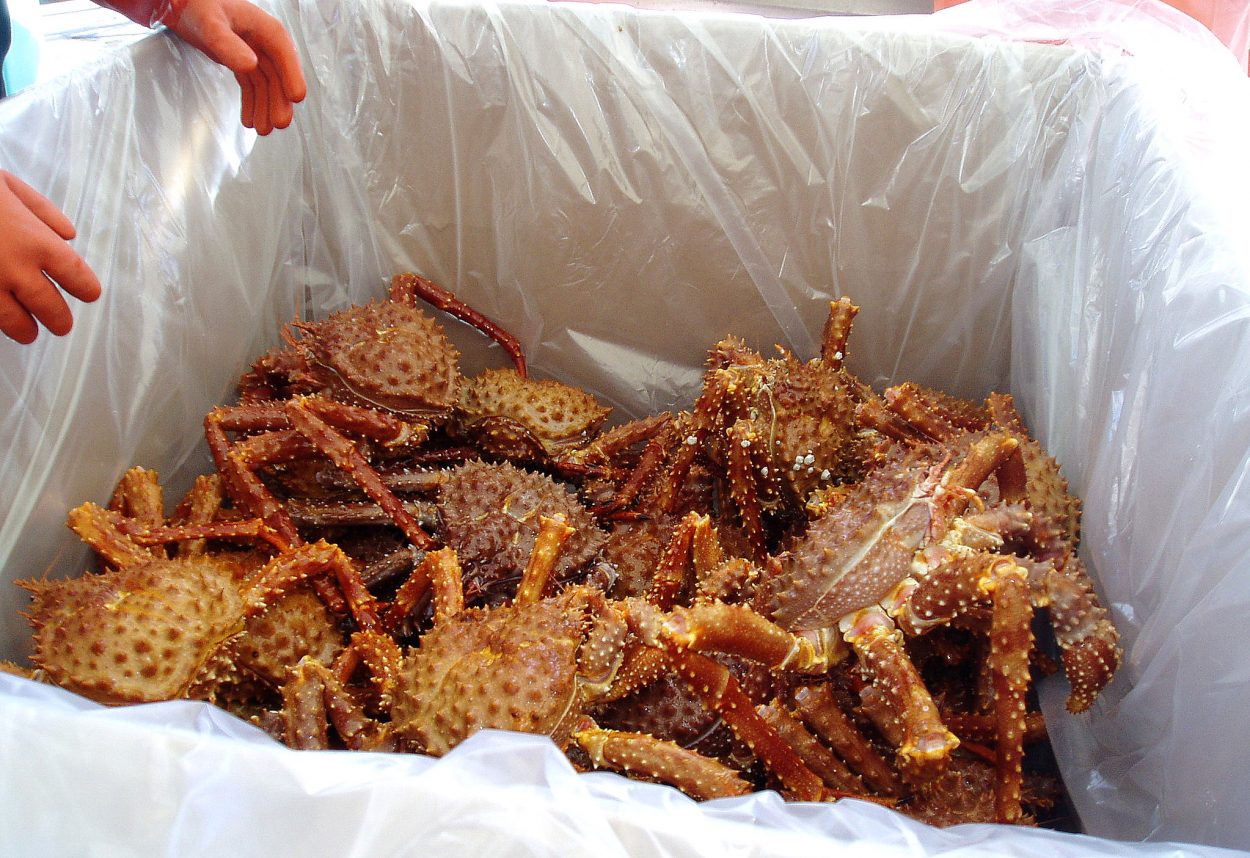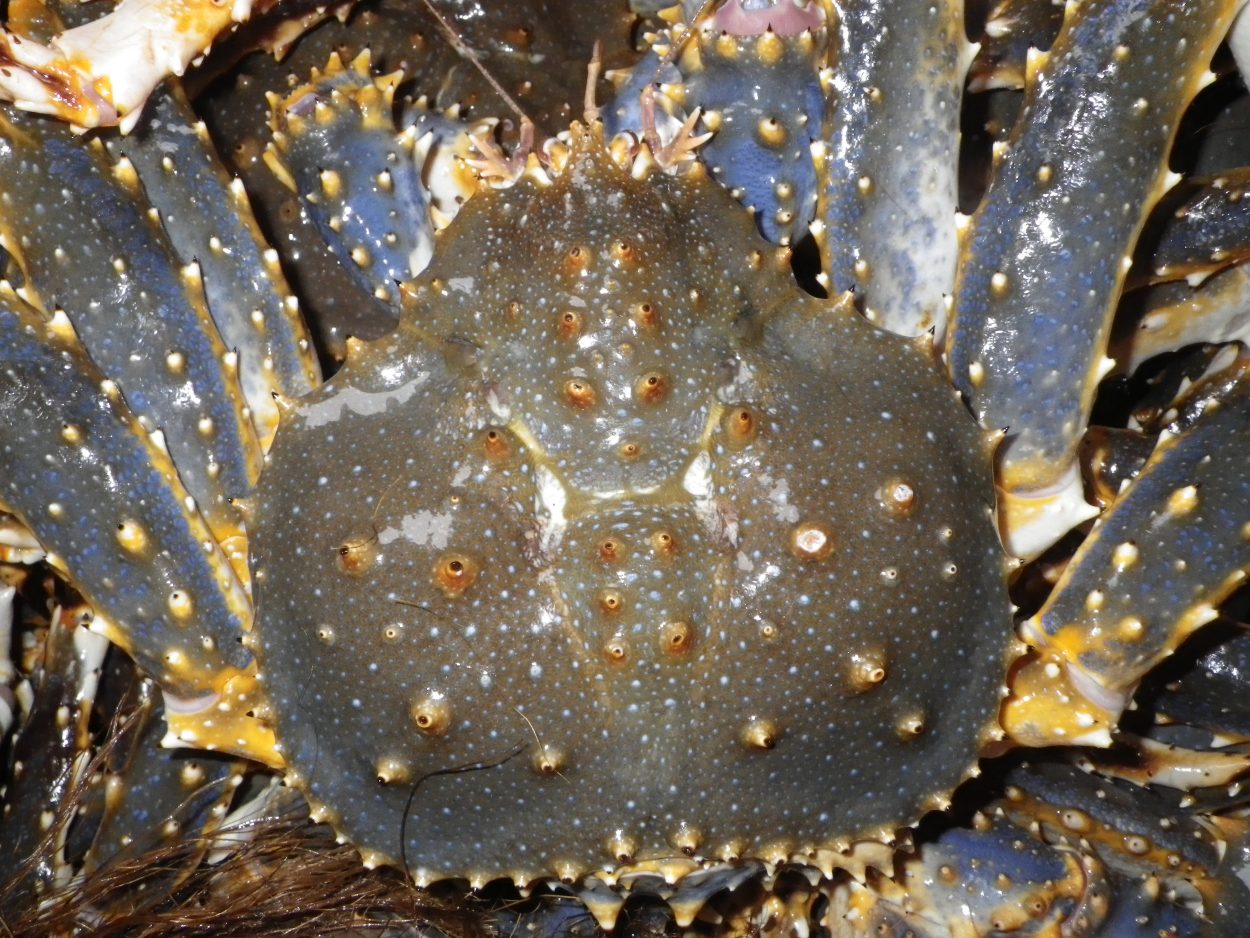
A very limited commercial fishery for golden king crab is happening in Southeast alongside the more popular Tanner crab fishery. As Angela Denning reports, managers think the golden king species might be on the downward side of a long cycle.
The total harvest goal for golden king crab for the region is just 41,500 pounds. That’s about 35,000 pounds less than last year.
The state manages Southeast’s golden king crab fishery in seven areas. Four of the areas stayed closed at the start of the fishery on February 17 and another area—North Stevens Passage– closed on Feb. 19 after reaching its harvest goal.
“They’re a long, long lived species,” said Adam Messmer, a crab research biologist with the Alaska Department of Fish and Game.
Golden king crab live longer than many other crab species, surviving into their 20’s. They’re also bigger than most other crab and take at least seven years before they can be commercially harvested.
There have been many ups and downs with the fishery in recent decades. Harvests were strong from the early 1980s to the early 90s with close to a million pounds being harvested some of those years. There was a drop in harvests in the late 90s and then another increase in the early 2000s that lasted for many years, Messmer says.
“We had about a 15-year stretch of really high harvests and it’s just been dropping off in the last four or five years,” said Messmer.
Why that is, is unknown. Managers rely entirely on fishery harvest data because there are no other surveys on the species.
“So, it’s all how the fisheries have performed over the years,” Messmer said, “and then we try and set a GHL [guideline harvest level] for each area and target that GHL in season.”
Another mystery of the golden king crab is their long reproductive cycle. Most crab including red kings molt and release eggs every year. The golden kings do that every 20 months.
“So they’re not reproducing as fast as most other crab,” said Messmer.
There is one exception however: the blue king crab. They’re even rarer than the goldens, reproducing every two years.

There’s no Southeast fishery targeting the blue kings but in the past they could be kept as bycatch in the Tanner and golden king crab fisheries. This year though, they cannot be retained.
“They’re at extremely low numbers from what we can tell,” Messmer said. “In the past seven seasons there’s been 54 pounds landed.”
Messmer says with the closures they are trying to give the stocks a chance to rebound. They’ll keep track of daily catches of golden king crab by staying in contact with fishermen and they’ll close areas down as the harvest goals are met. If it’s too slow, they can close areas for conservation reasons as well.
Last year’s price for golden kings was about $11/pound, which is about normal for recent years.











